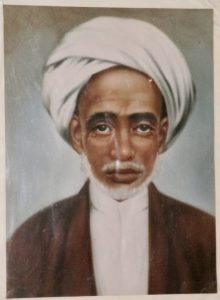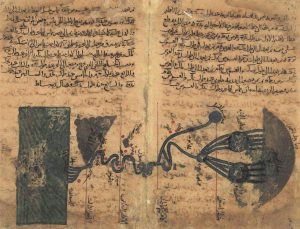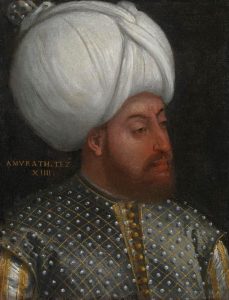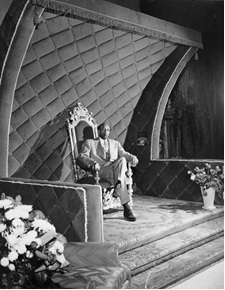Siyah: Zanzibar and Southern Africa – Imperial Visions and Ottoman Connections – Part I
This is the seventh instalment in ‘Siyah’, a series which explores African Diaspora and Turkish social and cultural narratives, with journalist Adama Juldeh Munu. Ahmet Kavas explores how the Ottoman Empire was embroiled in a struggle against Portuguese expansion and domination on the northern and east African coasts.
The Ottomans’ first contact with Africa was after the conquest of Egypt in 1517, which had been under Mamluk rule for three centuries. At that time Mamluk defence forces, which were fighting against Portuguese expansionism around the Red Sea and Aden Bay, accepted a new government in a short time. These defence forces were very important for the Ottomans’ protection of Africa’s eastern coasts, because if Portuguese rule contained the Arab peninsula and the Red Sea, it would be very difficult for the Ottomans to be the dominant power in the region. It is for this reason that the Ottomans felt the need to strengthen Mamluk defence forces immediately. With the help of these forces, the Ottomans had the opportunity to help the Sultanate of Harar in its victories against the Christian Abyssinian Empire that was receiving help from Portugal. The sultanate’s golden era during the 16th century was therefore possible with the help of Ottoman forces based in the Red Sea.
Note: The Sultanate of Harar was a kingdom located in Harar, Ethiopia. It succeeded the Adal Sultanate, and its leader Amir Nur continued the struggle of the Adal leader Imam Ahmed Gurey against the Ethiopian Empire.

French historian Jean-Louis Bacqué-Grammont, with one of his colleagues, wrote an important book on the removal of the Portuguese from the Red Sea entitled: Mamluks, Ottomans et Portugais en Mer Rouge: l’affaire de Djedda en 1517. We can also see many historians who paid much importance to this issue. As a result of this development, Turks were not confined to the Red Sea only, but expanded their rule to India and the East African coasts.
“With victory came mastery of the Red Sea and the trade with the East. The Ottomans inherited the custodianship of the Holy Cities of Makkah and Madinah and the pilgrimage routes. This meant protecting Red Sea shipping from the Portuguese. In 1538 the Ottomans sent a huge fleet of 100 ships and 20,000 men down the Red Sea. They occupied Aden and captured a number of Portuguese ships. This Ottoman occupation prevented the Portuguese from threatening either Aden or Jeddah any further, and, by the 1560s, more spices, largely conveyed in ships from Aceh, were reaching Jeddah than were reaching Lisbon. By the end of the 16th century, the Portuguese had abandoned any attempt to establish a monopoly of trans–Indian Ocean trade, contenting themselves with their control of the sea route to Europe. Many private Portuguese traders operated on equal terms with their Asian partners and competitors, fully assimilated to the constraints of the Indian Ocean trading network.”

Piri Reis, who was one of the Ottoman Empire’s greatest seamen in the 16th century wrote a book called Kitâbü Bahriye, detailing the region from Somali’s capital city Mogadishu to Madagascar. Below are extracts:
“One of the more distant cities is known by the name of Sofala. It is rich in gold mines. Another is Mombasa, another Malindi, another Mozambique and still another Kilva. The most famous however is the city of Mogadishu. There is no city larger than this here. The ships of the Portuguese come to this city every year and take the gold they obtain back to their country. Now I have told you one by one everything there is concerning the country of Mogadishu, which is called Abyssinia. See now the island’s good friend, and hear what is located on them. There exists an island there known by the name Zanzibar. It is inhabited by the Muslims. There is a great island there that they call Tinku. The Franks call this island San Loranzo (Madagascar) while the Arabs call it Kûmûr. They speak in the language of Mogadishu and they call this place Tinku. The most valuable product there is the wood of the sandal tree. In that country this is all that they burn. Another thing’s respect is their Black rulers whom they obey like sultans. Their ruler at one time was Sultan Adil bin Muhammed Han. There are large cities there and all the inhabitants are Black. One of the cities is Re’s-i Bîmâr (Vohimarina– Port on the eastern coast of Madagascar) and another they call Sa’de (Port on the west of Madagascar). One of the cities is Lankaniki (capital of Madagascar, located on western coast), their capital. All the people here are of the Shafi’i sect.
Besides this island there are four more, and all together they are called the Comoros Islands. Each one of these islands has a separate name. Tell me each one. One of these islands they call in fact Mu’alî (Moheli). This island has three large cities. Its inhabitants are all of the Shafi’i sect and all perform their ablution. Because the shah of shahs rules not this island, it is governed by a council of elders. The second island they call Mâgûtâ (Mayotte). The Portuguese occupied this place and wished to establish a colony here. I will tell you that the island has a ruler who loves God greatly. He is Muhammed bin Omar, the son of a sultan, and he is the sovereign of the island. Some of the population are Black and some are white. They are of the Shafi’i sect and there are no divisions among them.
Hear now about the third of the islands and its name is Züvânî (Anjouan, third of the Comoros Islands). All the inhabitants of this island are Black. A sheikh rules over them and they have no other sovereign. All of them are Muslims of the Shafi’i sect and they are all champions of the faith. Now if you wish let me tell you the situation of the fourth. Behold the circumstances of this island: it is loftier than the others. Though it has high mountains it lacks streams and there is no good harbor here for ships. They call it Kazîja (Grande Comore [Ngazidja]) and it is ruled over by forty great sheikhs. They hunt each other down and sell their prey. They are good hunters like Tartars. Good friend, I have explained these five islands and now you should see what sort of customs they have. They treat their slaves like sheep and lambs. Some are old and some are young. There are men with a thousand slaves male and female. These are cared for like cattle. And their sons and daughters they constantly put up for sale. Sailors come hither and buy them. They fill their ships and take them away. They always sell them in Yemen though sometimes they take them as far as Jeddah. I have told of the particulars of this island. Now hear about the others. Besides these islands there are two more which are also among the Comoros islands. One of these is Penba. This island that I have called Penba is also known as Akhdar. This island has so many vineyards and gardens that were a man to enter here he would become lost.”

In order to be powerful in the Indian Ocean region, it was necessary (for the Ottomans) to possess Yemen. The Ottoman Empire expanded its borders to the furthest point in her entire history during the time of Sultan Murad III (1574-1595). The sultan personally appointed Hasan Pasha as the governor to show how the region was important for him (1580-1604). On the way to India, the Portuguese tormented rulers of southern Arabia and the coastal region from Somalia to South Africa. Hasan Pasha sent troops to Oman and also a fleet to Mombasa twice to protect the region from Portuguese invasion. In all these expeditions his best supporters and assistants were local people and in turn their rulers declared their lands to Hasan Pasha.
It was not till the year 1580, in the time of Sulayman’s grandson, Murad III, that a renewed struggle took place. It was, however, local, being entirely confined to the coast of East Africa. The attack on the Portuguese seems to have been the work of one man, Ali Beg, who was sent out by the Albanian Wali of Yemen. It is doubtful whether this was ordered or inspired from Constantinople, as it does not seem to have been mentioned by any Turkish historians. The Arabs, who had declared in favour of the Turks, continued to defy the Portuguese, and in 1589 the Wali sent out Ali Beg a second time on a better equipped expedition. Ali’s ship consisted of four galleys and had been captured in the first attempt. Had the Turkish rulers now been in a position to send out a strong fleet they might possibly have overthrown the Portuguese naval power. Ali Beg was received with enthusiasm by all the Arabs who had declared for Turkey, but, as before, Malindi defied him. Ali Beg grounded on a sandbank and was bombarded by the Portuguese. He got away to Mombasa, intending to fortify himself there. The fleet (Portuguese) arrived on the coast of Brava, and following it to the south by the Lamu Archipelago received news that the Turks were at Malindi. He found on arriving there that they had gone to Mombasa. The fleet arrived at the entry of the port on March 5, 1589. The fight which ensued ended in the destruction of the Turkish fleet and the capture of the fort which they occupied. Many Turks who took refuge on the mainland were killed by a Bantu tribe, known to the Portuguese as the Zimba, who had for some years been spreading desolation along the south-eastern African coast from the Zambezi northwards. This ended Turkish discomfiture.
In part two of his essay, Kavas focuses on the Ottomans’ relationship with South African Muslims and Southern African nations.
Original essay published here: https://dergipark.org.tr/tr/download/article-file/582756


